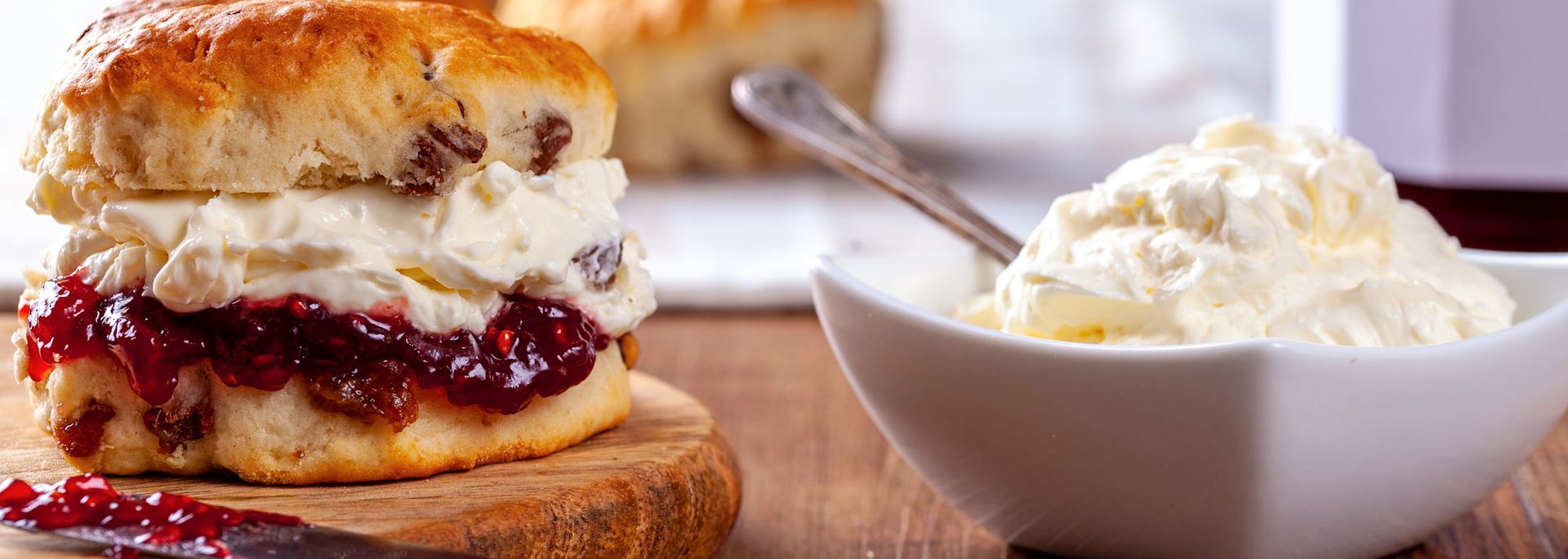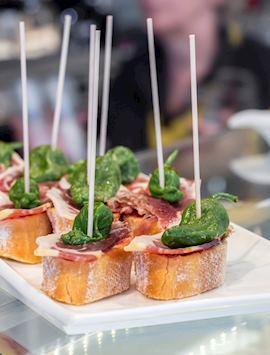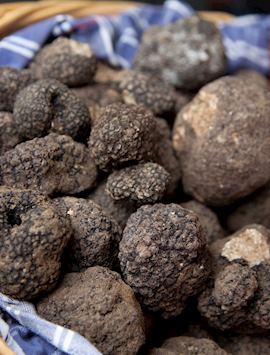‘How can you govern a country which has 246 varieties of cheese?’ Charles de Gaulle once lamented. Ruling such a gastronomically diverse land may have been a chore for the general, but we think that Europe’s regional dishes are one of the primary reasons to visit. Many of our own travels are culinarily motivated, and we always make time for a food tour or cooking class on our trips.
We asked our Europe specialists to disclose the regional dishes they love best. They answered with everything from Lyon’s pink-veined praline brioche to Piedmont’s tuna-based tonnato sauce. You can build any one of these experiences into a European tour, food-focused or otherwise.
Tonnato sauce in Piedmont, Italy
By Italy specialist Caroline
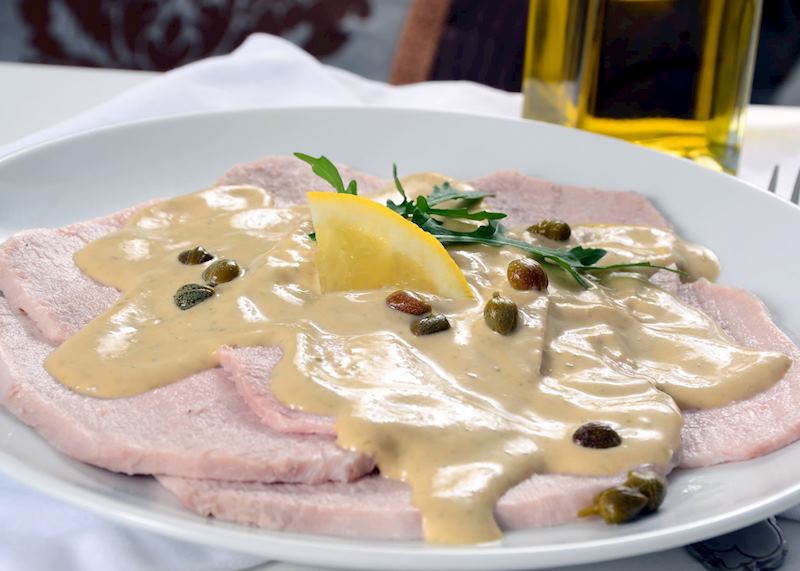
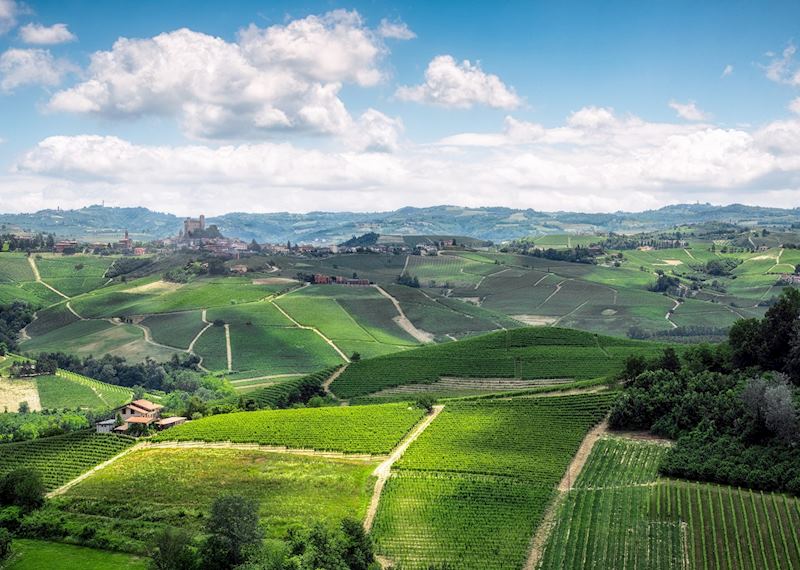
Its best-known sauces — bright pesto, rich ragù and garlicky marinara — are instantly familiar, but a culinary tour of Italy can reveal many other Italian sauces that haven’t yet made their mark on our culinary scene.
One such sauce is tonnato, Piedmont’s complex tuna mayonnaise. On a visit to the region, you can learn to make this unusual sauce at a private cooking class at a small family-run eatery in Treiso.
I’ll admit that the sauce’s ingredients list didn’t inspire me at first glance: anchovies, tuna, mayonnaise, capers, lemon juice, olive oil and handfuls of fresh flat-leaf parsley.
My tutor, head chef Gioele, instructed me to pile everything except the oil into a food processor and blitz it all to a thick paste that didn’t help allay my fears. Then I drizzled in the olive oil, blending to make a thick, creamy sauce that was barely tinged a pale, springy green.
Gioele poured it liberally over some roasted red peppers and a round of mild, semisoft raschera cheese. Sitting down to eat in the courtyard, I forked the sauced peppers into my mouth tentatively.
The taste wasn’t what I expected. The big, bold ingredients were all carefully balanced — the briny anchovies and tuna, the acidic lemon and capers, the verdant freshness of the parsley, all bound with the unctuous richness of olive oil and mayonnaise, making a luscious foil for the delicate vegetables. Despite my initial trepidation, I found myself cleaning the plate with the grissini.
Praline brioche in Lyon, France
By France specialist Samantha

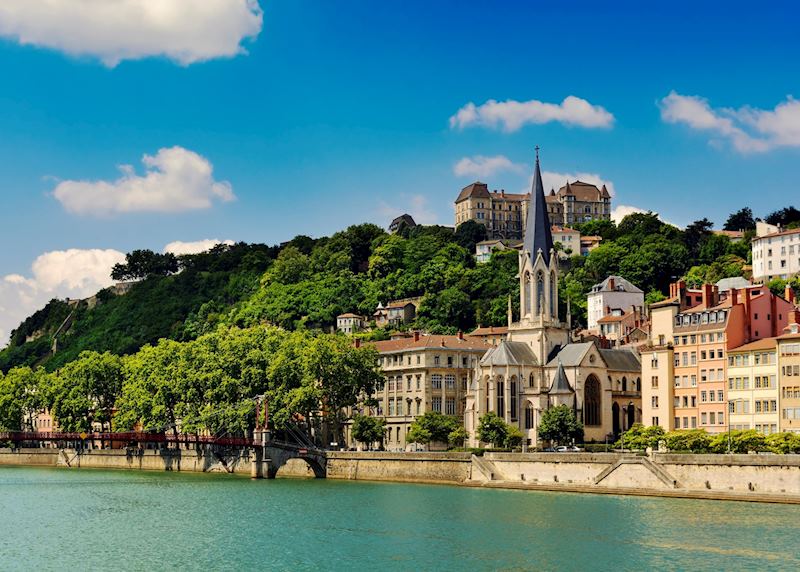
Many of the dishes that I once thought of as quintessentially French (including coq au vin among them) are, in fact, from Lyon in the Rhône-Alpes. That’s because their city has been the capital of French gastronomy since the 18th century.
Lyon is a place that’s slow to wake. When you start this tour at 9:30am, the still-sleepy streets are just beginning to stir. My tour guide, Virginie, was a petite brunette with an infectious enthusiasm for Lyonnais cuisine. As we walked among people opening cafés, she explained the history of the city’s best-known eateries — bouchons Lyonnais.
These casual cafés opened in the 17th and 18th centuries to cater to the area’s silk workers. They still serve hearty, traditional dishes, often on red-and-white tablecloths.
There are fewer than two dozen certified bouchons today. Their status is indicated by a plaque depicting Gnafron, the wine-loving cobbler from the Lyonnais puppet shows that eventually evolved into Punch and Judy shows in Britain.
But before we stopped at the bouchons, we paused at a patisserie. When I stepped inside, I was assaulted by a wave of warm, buttery, sweet-smelling air. Virginie explained the names and histories of the different pastries, as I stood there, nearly delirious from the scent. Then handed me a small, warm bun, its golden top glazed with a shiny, crackled crust of sugar and studded with bright pink nuggets. This was a praline brioche, she explained as I took a bite.
The sugary, barely crunchy crust gave way to a rich, feathery brioche, which boasted veins of sweet, vibrant pink praline studded with almonds. The combination melted in my mouth.
Pintxos in the Basque Country, Spain
By Spain specialist Allan
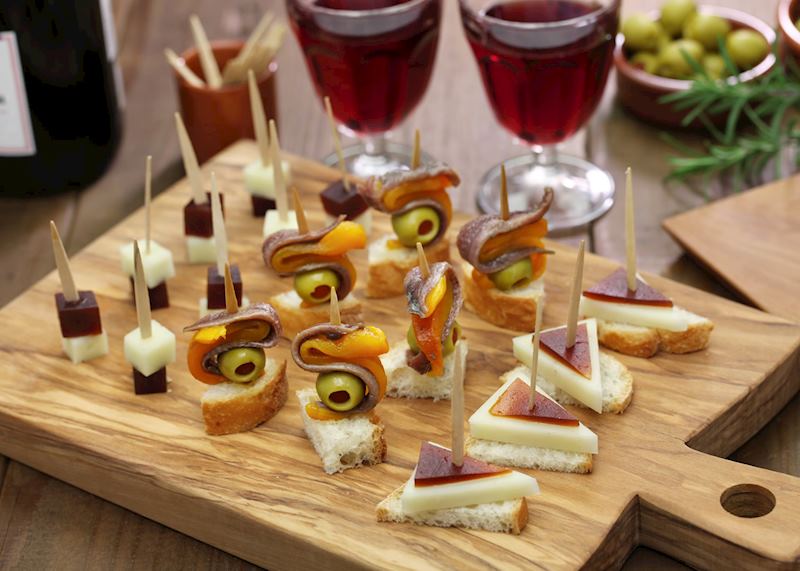
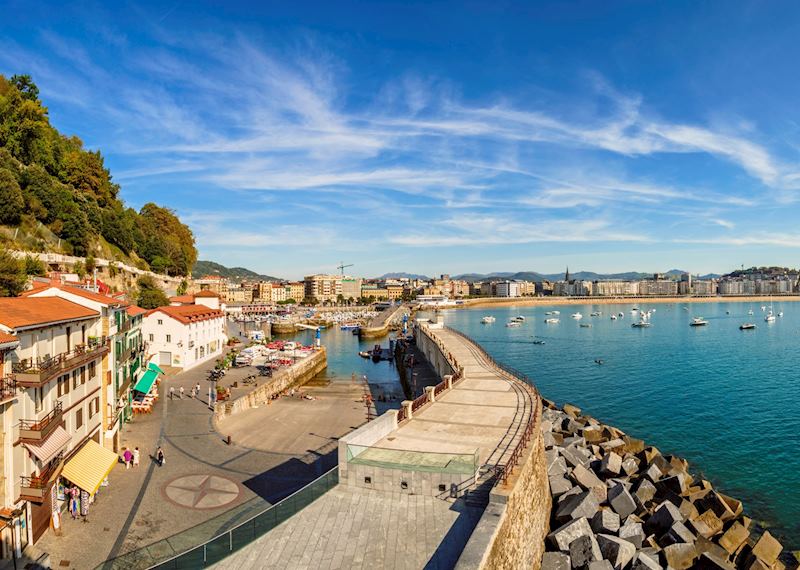
Served alongside drinks or shared among friends, tapas are a signature dish of Spain. But, I don’t think any culinary tour of Spain is complete without a visit to the Basque Country to see its regional twist on the ubiquitous small plates.
Pronounced ‘peen-chos’, pintxos are usually served on toothpicks or skewers, pinned to the toast they’re served on. The name comes from the Spanish verb pinchar, to pierce, as opposed to tapas from tapear, to cover. The bites are also smaller, usually sized for a single bite instead of sharing.
For the most intriguing pintxos, I suggest that you visit the region’s undisputed gastronomic capital, San Sebastián, and embark on a small-group tasting tour. In the Basque Country, the food, culture and history are so entwined that the tour provides a comprehensive introduction to the whole region.
Guided by Gabrielle, a local culinary expert, we sampled signature dishes at five bars, including grilled foie gras, braised rabbit, and wild mushrooms that had been sautéed to a golden tenderness.
Along the way, Gabrielle explained that in the 19th century, Spanish royalty summered here, taking advantage of the city’s golden-sand beaches and bringing skilled French chefs with them. That legacy has given San Sebastián an outsized culinary heft — it boasts 17 Michelin stars, a remarkable feat for such a small city.
I also discovered that, with both pintxos and pintxos bars, appearances are often deceptive. Small, dark holes in the wall turned out to have transcendent food, despite the thick layer of napkins that littered the floors. (Gabrielle reassured me that it’s tradition to fling yours down once you’ve finished.) And, the chefs like to play small tricks on eaters — something you think is an egg might turn out to be a lemon dessert.
Cataplana in the Algarve, Portugal
By Portugal specialist Kevin

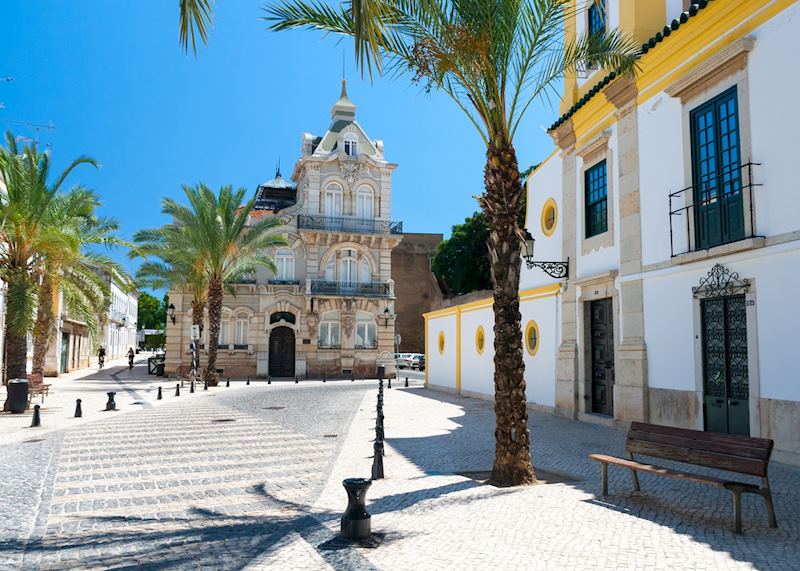
Chefs in the Algarve take advantage of the region’s proximity to the coast for its signature dish, cataplana, which is named after the distinctive, clam-shaped hinged pot that it’s cooked in. There’s no recipe — instead, the ingredients are dictated by what’s fresh at the market that day.
You can discover how to make cataplana at a private cooking class in the small town of Faro, which you can visit on this two-week trip to Portugal. The professional chef leading the tour met me at the market and, together, we chose about two dozen different species, including fat littleneck clams, long, thin razor clams and large shrimps. We also picked up a bottle of white wine, some onions, garlic, tomatoes and chilies, and a handful of bright-green herbs.
From the packed municipal market, she leads you on a slow walk through the Cidade Velha (old town). There, you’ll see the medieval streets. Paved with black and white cobblestones, they’re crowded with buildings more suited to the Mediterranean than the Atlantic coast. The walk takes you to a professional kitchen, where your chef begins to unpack the mystery that is making cataplana.
The process itself is simple — dice and sauté aromatics in olive oil, add wine and tomatoes, and then begin putting in the fish and shellfish. The trick, I discovered, is knowing when to add the seafood and in what order to ensure that everything finishes cooking at the same time.
Once the tightly curled shrimp were layered in, the dish didn’t need to cook for much longer. Lifting the hinged lid on the pan, I was struck by how painterly the stew looked — clams and shrimp standing up from the coral-pink broth, all wreathed in fragrant steam.
Afternoon tea in London
By UK and Ireland specialist Elizabeth
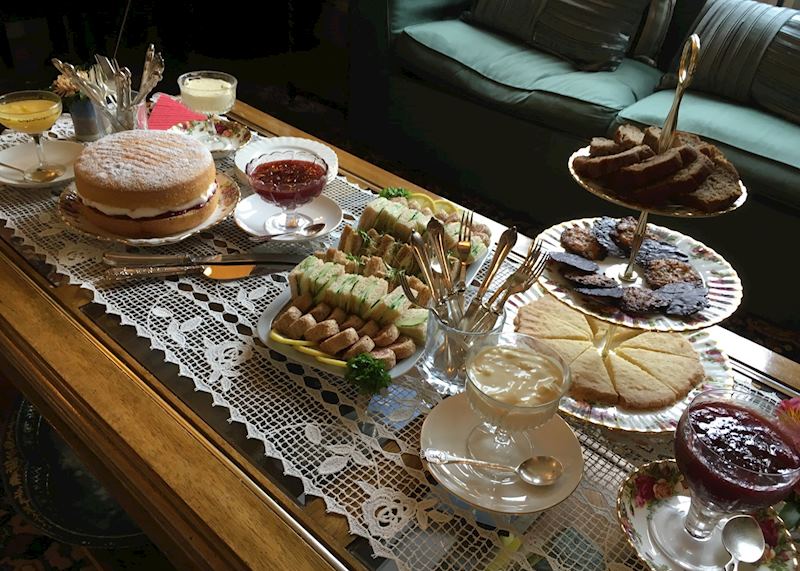
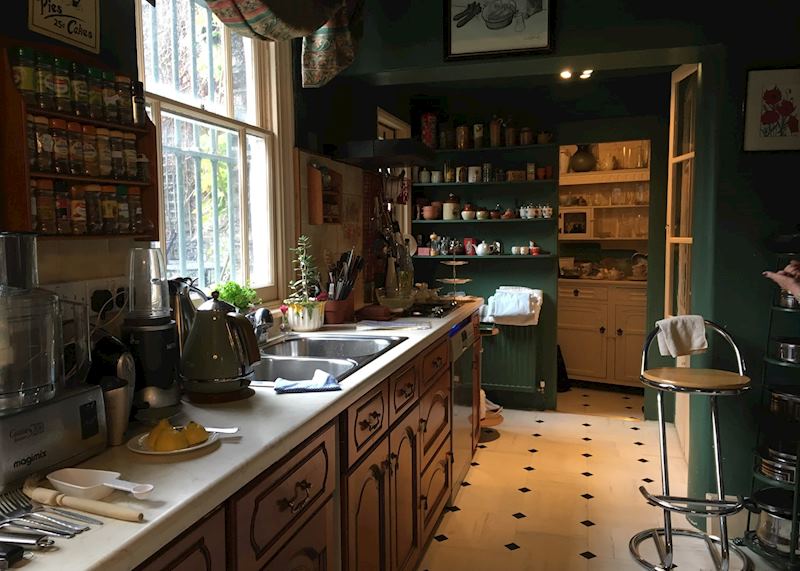
The regional nuances of afternoon tea are hotly debated. Do you pour milk or tea first? When preparing scones, is it jam or cream first? And, is it high tea or afternoon tea? On a gastronomic tour of the UK, you can get the answers to these questions and others during a small-group lesson about the etiquette and art of tea in a private London home.
Giuliana lives in an elegantly understated area of the city, and she welcomed me with a wide smile before escorting me and my fellow students back into her galley kitchen. There, she ran through the long and complicated history of this British custom.
I was fascinated to learn that one of the great tea debates — milk or tea first? — has to do with class rather than region. Inexpensive china will crack if you pour hot tea directly onto it, while fine cups can withstand the thermal shock.
Strapping on our aprons, we assembled the finger sandwiches while Giuliana discussed the nuances of tea leaves. Then we sniffed and sampled loose-leaf varieties from India, Africa and China before adjourning to the sitting room.
There, the low table was set with vintage embroidered linens, an eclectic set of differently patterned china, and a three-tiered stand arrayed with shortbread, teacakes and banana bread. On the table, two cut-glass pedestals held different compotes for us to dollop on the luscious Victoria sponge, a traditional layer cake with a filling of whipped cream and jam.
As Giuliana poured the tea, she explained the subtle etiquette of the ritual. For instance, the lady of the house pours the first cup only. After that, guests are expected to help themselves, so as not to interrupt the flow of conversation.
Read more about trips to Europe
Start thinking about your experience. These itineraries are simply suggestions for how you could enjoy some of the same experiences as our specialists. They're just for inspiration, because your trip will be created around your particular tastes.
View All Tours in Europe